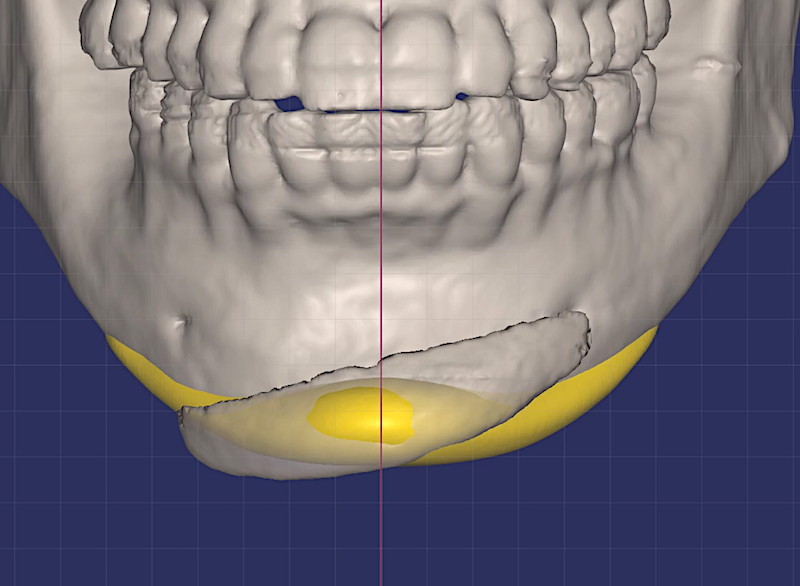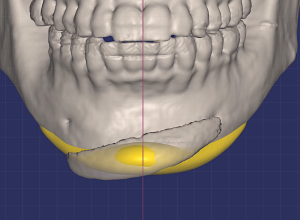Although chin implants are a commonly performed aesthetic facial surgery procedures, there are numerous aesthetic complications with them. Sometimes it is the size of style of the chin implant chosen which is a largely preoperative issue. Other times it is placement of the chin implant which is an intraoperative issue. And in the most unfortunate it is a combination of both the chin implant and how it was placed.
In chin implant revisions I have learned it is not good to guess how to fix it based on what one perceives from the outside. ‘Eyeballing’ a chin implant revision, while occasionally being successful, often just leads to another revision as the true extent of the problem may not be appreciated until during surgery and, because of the limited visibility through a small incision, may never be truly known.
This is where the role of a 3D CT scan (cone beam scan) has great value. The determination of what the chin implant looks like and where it is exactly placed becomes immediately clear. Silicone, PEEk and ePTFE implants are very clear on 3D CT scans, Medpor unfortunately is less so.

External visualization of how to correct a chin implant concern is doubling down on what was already an incompletely visualized procedure. Operative notes, a surgeon’s recollection of how the surgery was done and 2D x-rays can be helpful but are fraught with the potential for errors. A 3D CT scan removes all doubt by providing a clear view of exactly what things looks like on the inside, the material notwithstanding. The low cost and easy availability of 3D Ct scans today make their use almost the standard of care for facial implant revisions.
Dr. Barry Eppley
Indianapolis, Indiana




